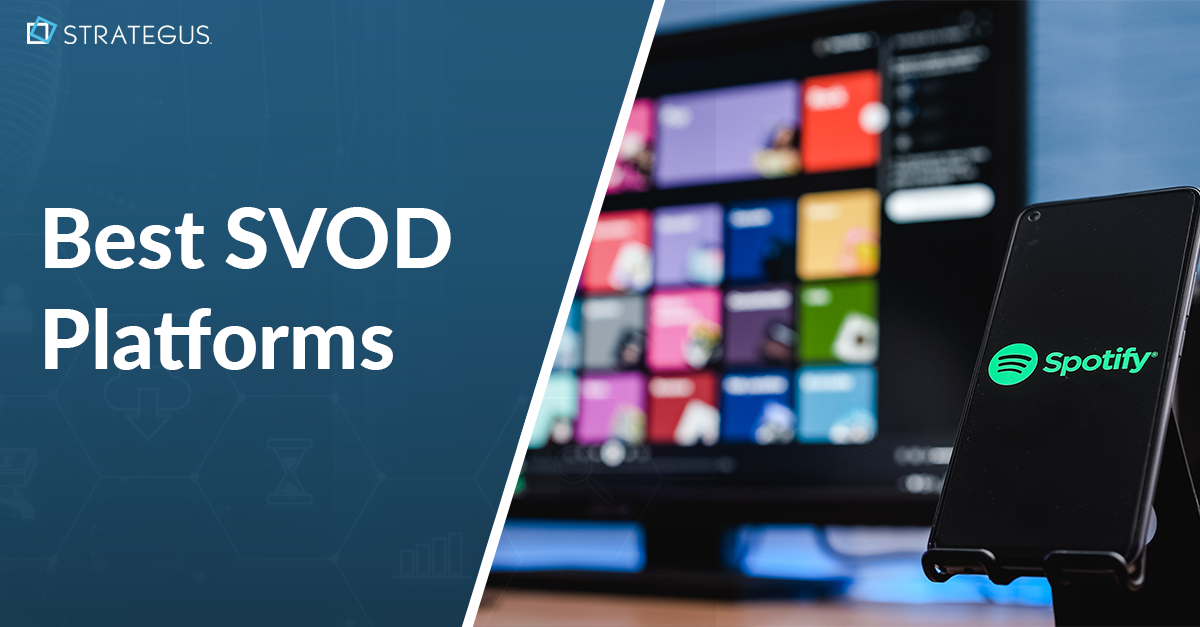- Home
- Strategus Blog
- How Media Consumption Has Changed in Light of COVID
How Media Consumption Has Changed in Light of COVID
 Andy Dixon
Andy Dixon
5 minutes read

Key Takeaways on the Road to Recovery
By Joel Cox, Co-Founder and EVP, Strategus
The pandemic has shocked everything, and though everyone staying put in their homes wasn’t going to last forever, the relationship between advertiser and customer is forever changed. The soaring consumption of video streaming on internet-connected televisions has led to the inevitable mainstreaming of ad-supported streaming video.
Brands, agencies and media buyers need to adapt to changing buyer behaviors, and adopt new strategies as the “new normals” come into focus.
More Choices and Channels
There is more media consumption all around, and people are discovering new worlds of digital streaming. Though we saw high news consumption early in the pandemic, we’ve seen that drop off drastically. No one wants to watch that train wreck anymore, and with no live sports, we’re seeing viewership spike toward more uplifting, family-friendly entertainment, special interest and affinity content such as gardening, gaming and hobbies.
This opens the door for more “long tail,” omnichannel advertising inventory – lots more to choose from spread across hundreds of smaller media properties and niche streaming apps. Without the ability to target individuals, this can’t work in the content-targeted, short-tail broadcast model, but works perfectly with programmatic OTT/CTV audience-targeted advertising.
Subscription Fatigue, AVOD on the Rise
News fatigue is growing, and so is subscription fatigue. People are less willing to pay for single-channel, walled-garden content not only because of personal financial pressures, but because with so many choices and channels, why pay when they are finding so much more out there for free?
This article in Visual Capitalist shows wide-ranging generational differences in consumption, but almost universal increases in streaming, online video, even broadcast TV. The results point to rising subscription fatigue, but also that viewers are more willing to explore their own content paths. It all adds up to a shot in the arm for ad-supported video-on-demand.
Daytime WFH
Working from home has evolved from a mere perk to a way of life. Moving forward, more people will work remotely, and more offices will expand work-from-home policies.
When people are working at home, the tendency is to flip on the connected television in the living room, and leave it on. This article in Click Z points to recent studies showing people who work from home consume over three more hours of media than before the COVID crisis began.
Though prime time is still important and retains the intensity of high-demand, high-cost inventory, it’s hard to increase viewership during that time. We are seeing considerable increases in TV watching during daytime workweek hours, and thus more available and valuable inventory to put ad dollars to work.
More Devices, More Inventory
With everyone at home, and more CTV daytime consumption, it turns out that not everyone gets to pick what they want to watch on the living room flat screen. So, family members have retreated to bedrooms, kitchens and dens, spreading their viewership across more devices. The Digital 2020 Global Statshot report for April highlights 4.2 Billion global users accessing the internet through mobile devices.
What we’ve seen is a clear correlation between the growth of available ad inventory and the rollout of stay-at-home orders. Our supply-side partners observed inventory surges in the first states that went into lock-downs, which cascaded into the later-adopting states. With these indicators, it would be expected that people are watching more TV at different times of day than they used to. But when we look beyond this, we’re seeing more long-term, sustainable inventory opportunities appear with people browsing more websites, and using more apps, on their smart phones and tablets. Apple has recently set app store download and revenue records when compared to pre-pandemic numbers.
More Value on Smaller Screens
With more people engaging with more screens, our stance has changed a bit on how we analyze, value and target the customer experience. Pre-pandemic, Strategus placed content quality and customer experience above all else when serving ads on CTVs. This was, and still is, where viewers are engaged together, as family and friends, in the comfort and togetherness of the living room. We normally would not serve those same ads on streaming video content mobile devices unless specifically requested, or if individual campaign parameters would benefit from it. However, with the increase in streaming content on those smaller screens, and with the tendency for the viewer to be more engaged with their device with longer-form content (as in, not always on-the-go or just catching a quick social media micro moment), we currently see more value in serving ads on CTV mobile inventory.
Bottom line: there’s a shift from less-engaged consumers on mobile to more engaged watching more meaningful content at home. It’s less transient, and is coming closer to the at-home experience, even with smaller screens. Higher quality and quantity of ad placement on mobile devices now makes more sense in the post-pandemic world, and justifies more inclusion in our campaigns.
Brand-Building Opportunities
Advertisers not sitting on the sidelines are benefitting from a higher impression share, greater consumer engagement and the learnings and optimizations that will better position them as we begin the trek back to some semblance of “normal.”
Don’t expect these trends to last, as more bidders will come back on a moment’s notice. In the meantime, the brands and agencies that excel will be those who keep moving while their peers suspend progress.
Changing Creative
All the big brands jumped at the opportunity to serve image ads on “60 Minutes” and other iconic (and expensive) content with messages of unity and “we’re all in this together.” But that theme is wearing off fast and our clients are positioning for how they will be perceived when the crisis recedes and the panic wears off.
Content creators just need to be mindful of the new normals of social distancing and better hygienic practices, and cognizant that most pre-pandemic creative just looks stale and dated at this point. Most people have had the same experience of not getting out of the house much, missing social interaction, and yearning for freedom of movement. We’ve been shocked into a new way of living. This new consciousness is not going to completely go away, but it’s starting to break loose and we can even start injecting some humor back into our messaging.
Engaged audiences and quality OTT/CTV inventory abound, consumer spending is about to go back up, and there is far less clutter and noise, for the moment… By thoughtfully allocating advertising budget into these nuanced OTT/CTV strategies, advertisers have perhaps the best shot ever to gain brand equity and differentiation from their peers as we shake off from the shutdowns.
“The man who stops advertising to save money is like a man who stops the clock to save time.” – Henry Ford


Andy Dixon is a seasoned Content Writing Specialist at Strategus, renowned for his expertise in creating engaging and impactful digital content. With over a decade of experience in content creation, Andy has honed his skills in a variety of niches, ranging from technology and marketing to education.
Strategus is a managed services connected TV(CTV) advertising agency with over 60,000+ campaigns delivered. Find out how our experts can extend your team and drive the result that matter most.
Talk to an Expert
Seeking a Custom CTV Strategy That Delivers?
What to read next

Best SVOD Platforms for Advertisers
The streaming wars have a new battlefront, and this time, it's all about your ad budget. Just a few years ago, SVOD meant "no commercials." Now, it...
12 minutes read

Third-Party Data Targeting for CTV: Benefits & Tactics
Third-party data. It’s a term that’s thrown around, and yet few take the time to detail its pros and cons — much less strategies for using...
7 minutes read

First-Party Data Targeting: Benefits and Tactics for CTV Advertising
First-party data is the information that companies collect directly from their customers rather than through intermediaries. Advertisers use this...
10 minutes read

Foot-Traffic Attribution: Tying Ad Impressions to In-Store Visits
The marketing funnel has changed. Today’s shoppers often begin researching products from the comfort of their homes and don’t set foot into a store...
8 minutes read















